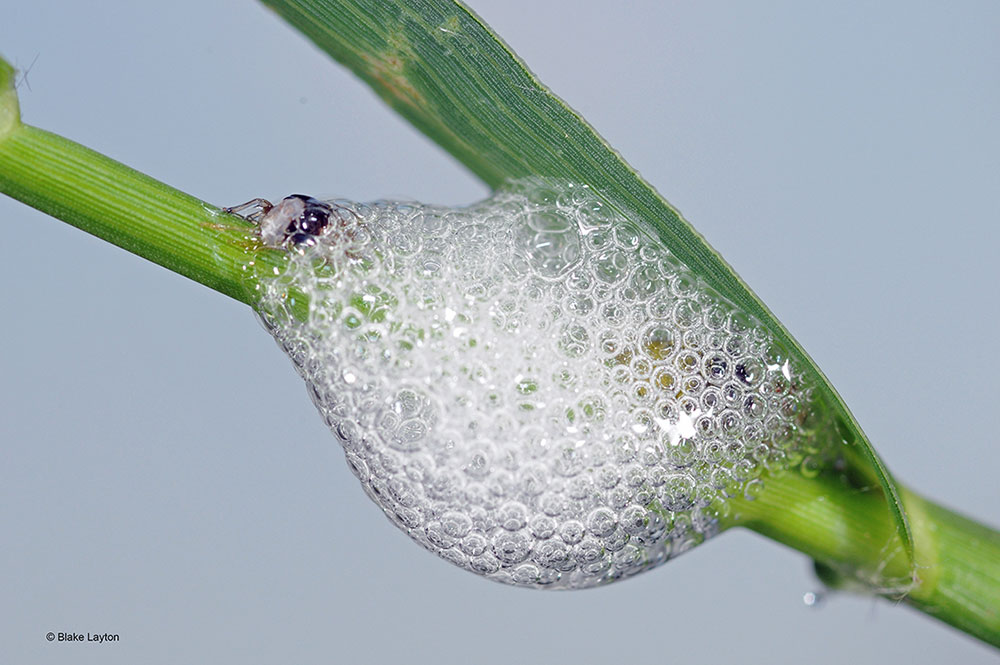Two-lined Spittlebug | Vol. 3, No. 20

Prosapia bicincta
Order: Hemiptera
Family: Cercopidae
Got a centipede lawn or know someone who has? Better check it regularly for spittlebugs for the remainder of the year. Cool, wet weather in spring and early summer is especially favorable for spittlebugs and we have certainly experienced such weather this year. Although two-lined spittlebugs also feed on other grasses, it is usually the prettiest, most highly maintained centipedegrass lawn in the neighborhood that experiences the highest infestations, and it is usually the second generation, which is beginning now, that most often causes damage. These are not major turfgrass pests, but during favorable years they can cause excessive damage to susceptible lawns, and folks who spend the time and effort it takes to maintain the kind of lawn spittlebugs really like won’t want to let it be badly damaged by spittlebugs. Spittlebugs also occasionally damage bermudagrass hayfields during years like this.
Adult two-lined spittlebugs are easily recognized by their dark maroon color and the two orange stripes across each forewing. Nymphs are rarely seen because they are hiding inside the spittle mass they produce to protect themselves from predators, parasites, pathogens, and desiccation. You may have grown up being told these masses were called “frog spit” or “snake spit,” and you may be surprised to learn there is an insect living inside. Actually, there may two or more nymphs inside a single mass. Use a grass stem to prod a few spittle masses and see how many nymphs you find.
A few spittle masses in a lawn is not cause for concern, but populations can sometimes be high enough to cause lawns to feels squishy when walked on. Damage is due to toxins both nymphs and adults inject into grass stems when feeding, resulting in yellowing or dead patches of grass. Consider treating if you notice large numbers of adults when mowing or walking across the lawn, or if you observe high numbers of spittle masses.
Control: Cultural controls can reduce potential for infestations. Avoid excessive fertilizer, watering, mowing height, or thatch build-up. If necessary, control two-lined spittle bugs by spraying with insecticides containing active ingredients such as bifenthrin, gamma-cyhalothrin, permethrin, or imidacloprid + cyfluthrin that are labeled specifically for use on turfgrass. Sprays usually work better than granular treatments. Mow and water just before treatment to improve control. Because it works systemically, clothianidin may be applied as granules, but must be watered in following application.
See page 9 of Extension Publication 2331, Control Insect Pests in and around the home lawn, for more information on spittlebug control.
Blake Layton, Extension Entomology Specialist, Mississippi State University Extension Service.
The information given here is for educational purposes only. Always read and follow current label directions. Specific commercial products are mentioned as examples only and reference to specific products or trade names is made with the understanding that no discrimination is intended to other products that may also be suitable and appropriately labeled.
Sign up to receive Bug's Eye View.

